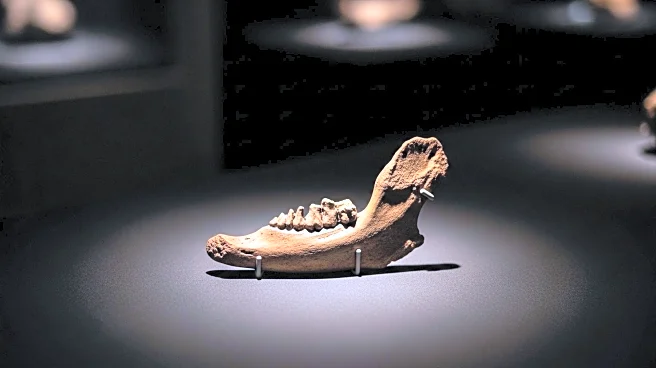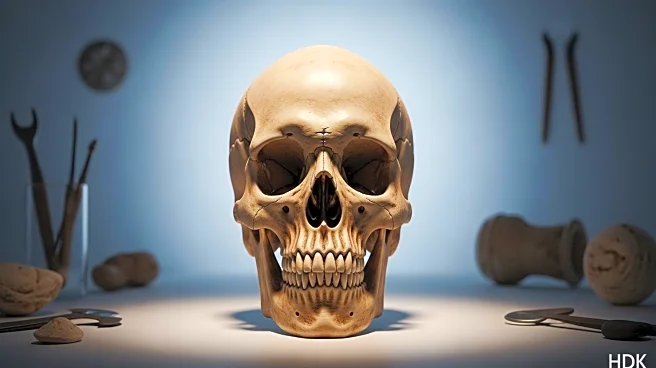What's Happening?
Archaeologists in Georgia have uncovered a 1.8 million-year-old human jawbone at the Orozmani dig site, located near the capital city of Tbilisi. This discovery is significant as it provides insights into early human presence in the Caucasus region. The jawbone, belonging to an early species of human, was found alongside other prehistoric remains, including fossils of extinct animals and stone tools. The site is close to Dmanisi, another important prehistoric site known for early Hominin remains. Researchers are using these findings to explore interactions between Neanderthals and Anatomically Modern Humans in the region.
Why It's Important?
The discovery at Orozmani is crucial for understanding human evolution and migration patterns. It sheds light on the lifestyle and interactions of early humans in Eurasia, potentially offering clues about the spread of human species outside Africa. The findings could influence theories on human ancestry and the development of early human societies. This research may also impact archaeological methods and the study of ancient human habitats, providing a broader understanding of human history.
What's Next?
Further exploration and analysis of the Orozmani site are expected to continue, with researchers aiming to uncover more artifacts and fossils. These efforts may lead to new insights into the early human colonization of Eurasia. The ongoing study of the site could also prompt discussions on the preservation and protection of archaeological sites, ensuring that valuable historical data is safeguarded for future research.













